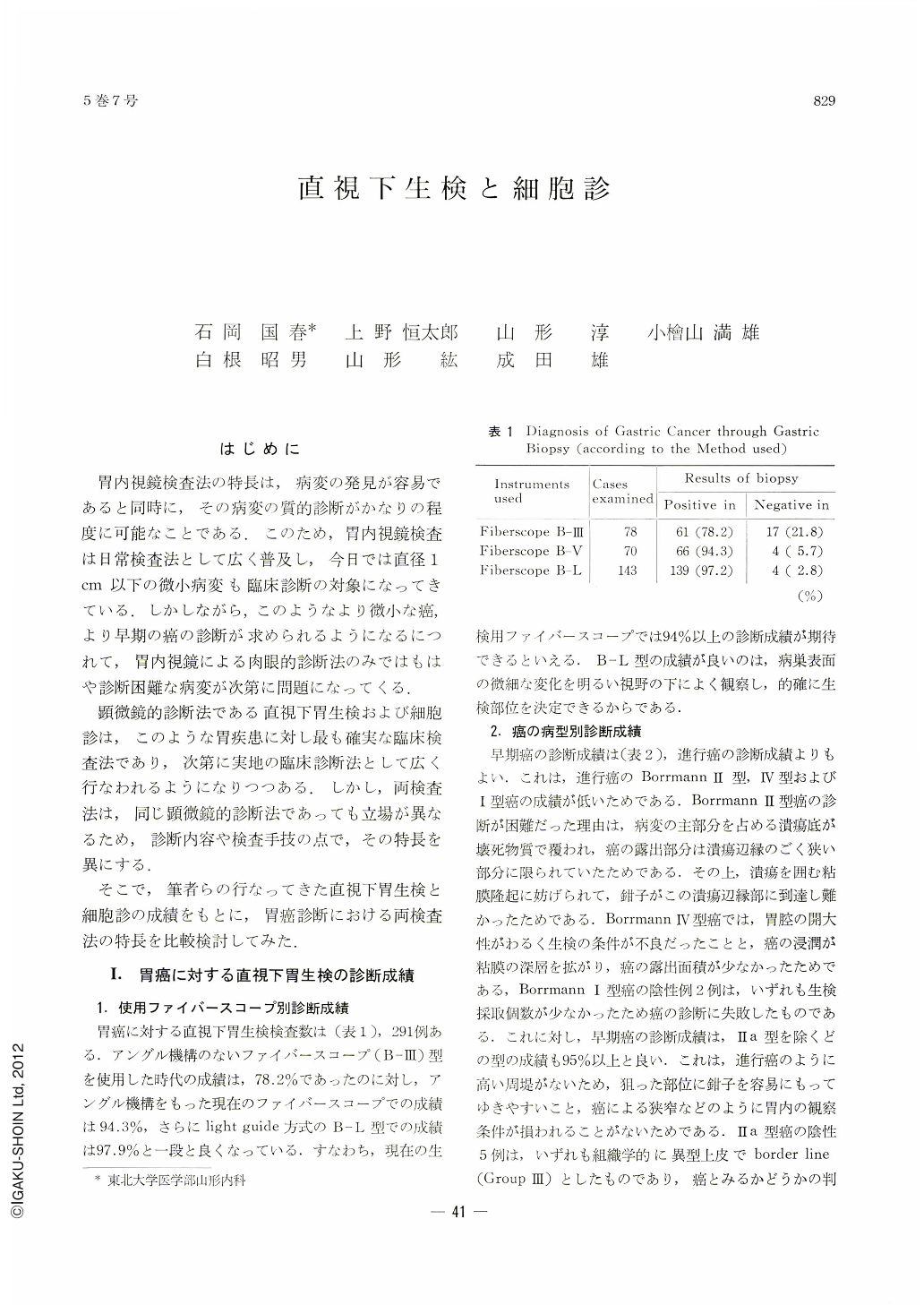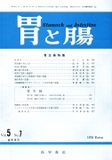Japanese
English
- 有料閲覧
- Abstract 文献概要
- 1ページ目 Look Inside
はじめに
胃内視鏡検査法の特長は,病変の発見が容易であると同時に,その病変の質的診断がかなりの程度に可能なことである.このため,胃内視鏡検査は日常検査法として広く普及し,今日では直径1cm以下の微小病変も臨床診断の対象になってきている.しかしながら,このようなより微小な癌,より早期の癌の診断が求められるようになるにつれて,胃内視鏡による肉眼的診断法のみではもはや診断困難な病変が次第に問題になってくる.
顕微鏡的診断法である直視下胃生検および細胞診は,このような胃疾患に対し最も確実な臨床検査法であり,次第に実地の臨床診断法として広く行なわれるようになりつつある.しかし,両検査法は,同じ顕微鏡的診断法であっても立場が異なるため,診断内容や検査手技の点で,その特長を異にする.
そこで,筆者らの行なってきた直視下胃生検と細胞診の成績をもとに,胃癌診断における両検査法の特長を比較検討してみた.
Merits of gastric biopsy under direct vision and cytological study have been correlated in the diagnosis of gastric cancer on the basis of results obtained in the authors’ department. At present, both methods have an accuracy of 95%. Biopsy under direct view shows more gratifying results in the diagnosis of early gastric cancer; cytology answers better for that of advanced carcinoma. In both of these procedures negative results are sometimes obtained in diagnosing ulcerative and scirrhus cancers, so that specimens must be sufficiently gathered. Biopsy under direct vision is indicated in the detection of smaller cancer lesions, and cytology is more advantageous in that of ulcerative carcinoma. The former shows only a few false-negative results.
Juvenile regenerated epithels have sometimes been mistaken for cells of cancer in cellular interpretation; it is not easy as well in this respect to discriminate between atypical epithelium anti cancer. whereas interpretation is of more importance in cytology, accurate obtaining of tissues is of more consequence in the biopsy under direct vision. The latter is to be utilized in a preliminary mass survey because specimens for study are easy to obtain. It holds out a great promise for accurate diagnosis of early or minute gastric cancer. One must take the greatest possible care to subject any protruding lesion to it lest cancer might be overlooked.

Copyright © 1970, Igaku-Shoin Ltd. All rights reserved.


